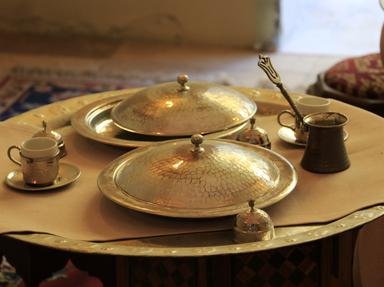Quiz Answer Key and Fun Facts
1. One of the oldest consumed nuts still in existence, shells of which of these hard-to-crack nuts were uncovered in the Shanidar Caves in Iraq, dating back to 50,000 B.C.?
2. What vine fruit was mentioned in the "Epic of Gilgamesh," written in 3000 BC?
3. Garum is an ancient fermented condiment made primarily with which of these ingredients?
4. Ancient Egyptian sailors carried flat loaves of millet bread known as "dhourra bread." Ancient Romans prepared "bucellatum" using flour, salt, and water. What would be today's equivalent of these ancient foods?
5. Hailing from the Brassicaceae family of plants, which of these spices is believed to be among the earliest domesticated plants, even appearing in Sanskrit manuscripts in 3000 BC?
6. Called "zhao" in China, "juk" in Korea and "kayu" in Japan, congee is a simple type of porridge that was first mentioned in Chinese texts around 1000 BC. What is its primary ingredient?
7. A study by the University of Innsbruck in two caves in northern Morocco revealed that this food was both eaten by humans and its oil used as fuel as far back as 100,000 years. Which of these foods is it?
8. As described by Herodotus in the 5th century BC, the ancient nomadic Scythians produced a fermented dairy beverage called "kumis," which is still drunk today in the Eurasian steppes. Which of these was traditionally used to make kumis?
9. Which of the following types of food was the Ancient Roman "panis focacius"?
10. Having been part of their diet as far back as the Ancient Egyptians, which of these foods can be inserted in the blank in this passage from the Bible (Numbers 11:5): "We remember the fish we ate in Egypt at no cost-also the _____________, melons, leeks, onions and garlic"?
Source: Author
trident
This quiz was reviewed by FunTrivia editor
Bruyere before going online.
Any errors found in FunTrivia content are routinely corrected through our feedback system.
